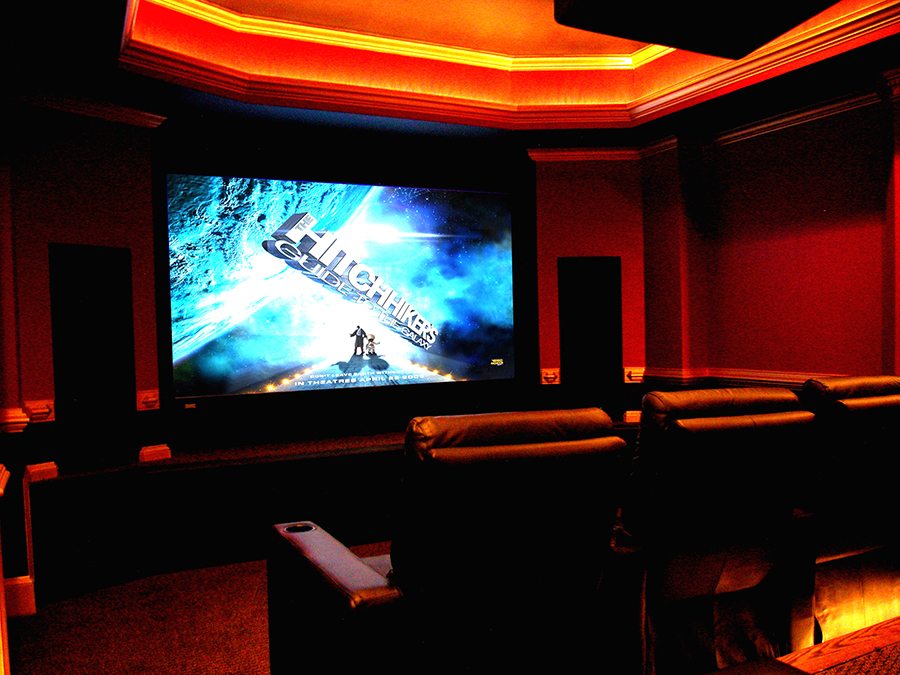Establishing a residential movie theater is an thrilling way to enhance your movie experience right from the coziness of your personal space. Whether you're a cinema buff, a gaming aficionado, or simply enjoy binge-watching the latest series, having a designated area tailored for film enjoyment can lift your satisfaction to greater levels. In the Hertfordshire area, residents are progressively putting money into bespoke home cinema installations, capitalizing on the area's attractive properties and technological advancements.
When planning your home cinema configuration, there are multiple crucial elements to think about to ensure you attain the ideal configuration. From selecting https://homecinemashertfordshire.co.uk/ to comprehending the significance of acoustic design, each element plays a pivotal role in establishing the perfect viewing environment. This piece will offer best practices and guidance into what to look for when hiring a home cinema installation expert in the Hertfordshire area, the main characteristics of high-end setups, and important queries to pose your setup expert. Whether you are starting from scratch or seeking to enhance an existing system, these tips will guide you through the steps and help you enjoy an engaging cinematic journey.

Opting for the Suitable Home Cinema Installer
Locating the best home cinema installer in Hertfordshire can greatly impact your overall experience. Start by exploring local specialists with a good reputation. Look for reviews and testimonials to gauge past clients’ happiness. A reputable installer should have expertise with a diverse selection of systems and should be able to customize their services to your personalized needs, ensuring a tailored approach to your home cinema setup.
It's important to consider the qualifications and expertise of prospective installers. Inquire about their qualifications and membership with industry organizations. A experienced installer should be knowledgeable with the latest technology trends, equipment brands, and installation techniques. They should also be able to offer you with a comprehensive plan that outlines the installation process, timeframes, and the expected outcome of your home cinema project.
Dialogue is key when choosing an installer. Search for someone who understands your requirements and preferences, suggesting solutions and suggestions that align with your vision. Pose questions about their previous projects and experience with comparable setups. A reliable installer will be clear about the process, ensuring you grasp every aspect of your home cinema installation.
Main Aspects of an Outstanding Home Cinema Setup
An exceptional home cinema setup starts with the high-quality display that suits your viewing preferences and room size. You might select a projector or a large-screen television, the image depth and clarity play a crucial role in your experience. When using projectors, consider the resolution and brightness, particularly if you plan on using the space during the day. A TV should have superb color accuracy and contrast ratio to deliver vibrant visuals. The screen size should be carefully picked to provide an immersive viewing experience without filling up the space.
Additionally, audio quality is paramount. A surround sound system, preferably with a minimum of five speakers and a subwoofer, will create a rich and immersive soundscape that complements the visuals perfectly. Pay attention to the placement of speakers; they should be positioned to surround the audience in sound, enhancing the overall cinematic experience. This attention to audio detail is what transforms a good movie viewing into an exceptional event, making you feel as though you are part of the action.
In conclusion, room acoustics and seating arrangements are crucial for a superior home cinema experience. Acoustic panels can minimize echo and improve sound quality, while the layout of your seating should allow for comfortable viewing from every angle. Make sure your seating is comfortable and appropriately positioned for optimal sight lines to the screen. Lighting is also essential; consider adjustable lighting that can be dimmed to create the perfect atmosphere. With these features together, your home cinema setup can truly elevate your movie-watching experiences.
Crucial Factors for Residential Film Design
When designing the layout of your home theater room, the first step is establishing the optimal seating arrangement. The recommended setup usually involves arranging seats at a distance where viewers can adequately see the screen without their necks. A general rule is to sit at a space of 1.5 to 2.5 multiplied by the diagonal measurement of your screen, depending on the definition of the display. This provides an immersive experience while guaranteeing that all viewers in the room has a distinct view.
Another key factor is the arrangement of speakers and the receiver for surround sound. Ensuring that speakers are at the suitable height and angle will boost sound quality and produce a more dynamic audio experience. The main speakers should be located at the height of the ears, while surround speakers often need mounting higher up. Additionally, a subwoofer should be located carefully to avoid blurry sound, commonly in a corner but occasionally off-center to maximize the area’s acoustics.
To conclude, think about the lighting in your cinema room. Management over light levels is crucial for viewing comfort and film quality. Use shades or blackout curtains to minimize outside light and choose variable lighting to create the ideal ambiance for movie-watching. Arranging lights in the rear of the screen or using adaptive lighting options can enhance the overall experience without a diversion. Proper planning and attention to these details will bring about a satisfying home cinema layout.
